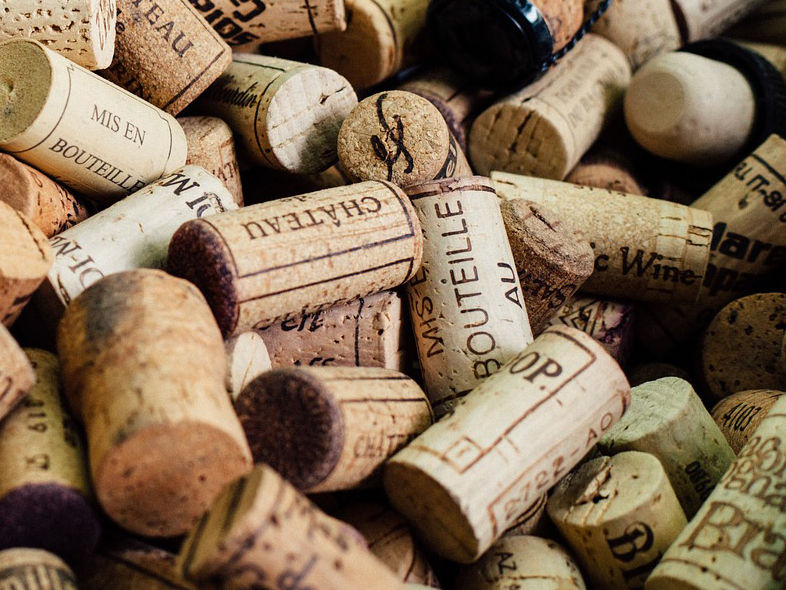
When I was at college, most self-respecting students would have in their room a few empty Chianti bottles with a candle stuck in the top of each. For a student, it was desirable to appear somewhat Bohemian or even slightly eccentric. Drinking wine was de rigueur whether you actually liked it or not. My first experience was a bitingly tannic red called Australian Burgundy and it came in a dark flagon-shaped bottle. It was virtually undrinkable but might have been useful for cleaning the floor of an abattoir.
One birthday, my mother sent me Raymond Postgate’s book A Plain Man’s Guide to Wine. I was not impressed by being considered “a plain man” especially by my mother. But at least she had the grace to apologize about the implications of the title. The book itself, however offered my first glimpse into what was then the mysterious world of wine. Although the book was highly influential in Britain, it was criticized for being amateurish and poorly written.
I recently told you about some myths that surround wine, but it has since occurred to me that there are many more. And in no particular order, here are eight of them.
Myth No 1: Tasting wine is always subjective
The key word here is “always”. It depends on why the wine is being tasted. If you taste merely to decide whether or not you like it, then of course it’s subjective. However, if you’re attempting to assess its quality, personal preferences should be irrelevant. Wine requires human assistance to make it out of grape juice. It is an exacting process: things can and do go wrong. I have tasted excellent wines but I have also a few which were not. Yes, you can find poor wine just as you can find badly-cut suits, poorly-written books or badly baked bread. The process of tasting for quality is complicated and requires a good many years of experience. Even then, professional tasters have been known to get it wrong. If these things interest you, there are plenty of excellent books on the subject.
Myth 2: Boxed wine is poor quality
Wine sold in boxes (or casks, as the Australians call them) is often exactly the same product as the bottled version but savings are made in the packing and shipping. Although wine snobs may turn up their noses, boxed wines account for fifty percent of the markets in Australia, Sweden, Norway and Brazil. Even so, a large box of wine might look a bit naff on the dinner table. So it’s better to pour what you want into a wine jug or decanter, which will have the advantage of aerating the wine as well.
Myth No 3: Wine is a living thing
It is indeed a lovely thought but it’s not true. During the wine-making process and the fermentation, you could argue that the wine is a living thing on account of the millions of yeast cells which convert the sugars in the grape juice into alcohol and carbon dioxide. Once the yeast cells have done their work, they simply die off. It’s sad I know, but that’s how it is.
Myth No 4: Red wines should be decanted to remove sediment
Most red wines have no sediment because any remaining solids are filtered off before bottling. High quality wine intended for ageing sometimes contains sediment which is simply left-over grape solids and dead yeast cells (yes, them again). The sediment won’t do you any harm, but few people enjoy the gritty taste sensation. If there’s sediment, decant the wine. Incidentally, there’s a difference between decanting and aerating. Many reds benefit from being aerated simply by being poured into another container. Others get enough aeration by letting them rest in the glass for a minute or two.
Myth No 5: Vintage wine is superior quality
In wine-speak, the word “vintage” doesn’t carry the same meaning as a vintage car. A wine’s vintage is the year in which the grapes were harvested. If the bottle is labeled Pinot Noir 2017, the wine in the bottle – or most of it – was made from the 2017 grape harvest. If a year appears on the label, it’s a “vintage wine” regardless of its age. Sunshine and other weather conditions have an enormous effect on the grape harvest. Some years produce better grapes than others, and therefore better wine. You can even obtain charts that compare vintage quality in different regions and countries. However, most commercial wines are made by blending bulk wine of different years to make a consistent product. For that reason, no year appears on the label.
Myth No 6: Riesling is always sweet
Yes, some of the finest dessert wines in the world are made from the Riesling grape, which incidentally is pronounced REEZ-ling and not RYZE-ling. However, most Riesling table wine is as dry as a bone. I suspect the myth dates from the 1960s when cheap, sweetish German wine flooded the British and American markets. By today’s standards, it was dismal stuff but for many people, it was their introduction to wine. It lives on under the infamous name of Liebfraumilch, a low-quality semi-sweet plonk which is made anywhere in Germany, not from Riesling but from relatively inexpensive Müller-Thurgau grapes.
Myth No 7: Alcohol percentages on wine labels are accurate
They are not. Alcohol by volume (usually abbreviated to ABV or alc/vol) is the international measure of the percentage of alcohol in a liquid. (Incidentally, this can also be expressed as alcohol “proof”, a system normally reserved for spirits. The “proof number” is about double the ABV number.)
In the USA, regulations allow a variance of 1.5% for wines below 14% ABV and a 1% variance for those above. This means that a bottle labeled 13% ABV could be anywhere between 11.5% and 14.5%. The difference might look insignificant but there is an enormous difference in mouth-feel – and hangover potential between them. Just regard the ABV as a rough approximation.
Myth No 8: One should always sniff the cork
In some up-market restaurants, the waiter places the cork of the opened bottle on a small plate and gives it to you to examine, as though it is some rare and wondrous thing to be admired. This odd custom probably dates from the time when corks could dry out or even start to rot. Sometimes unscrupulous “middle-men” would re-label wines in an attempt make them appear more expensive. Reputable wine producers knew this, and as a guarantee printed their name on the cork as well as the label.
As to actually sniffing the cork, it will usually reveal nothing about the wine. I sometimes find myself doing it, but this is because I was probably a dog in a previous life and I instinctively sniff anything placed before me. But not only wine, even books and magazines.





